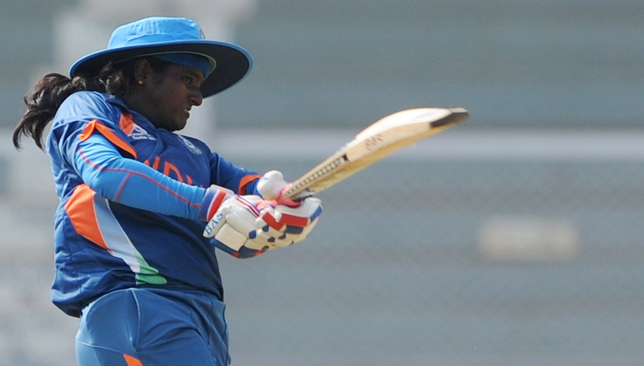
In the two years since England’s women became the first professional team of their gender in cricket, the sport has seen some groundbreaking developments.
The first Women’s Big Bash League played out alongside the highly successful male version and proved a hit in its own right, while those trendsetters over at the ECB were not to be outdone. The Women’s Cricket Super League was formed, made up of six regional franchises consisting of county cricket clubs and universities invested in growing the game.
Perhaps most significantly, England wicket-keeper Sarah Taylor crossed the divide at the end of 2015 as she turned out for the Northern Districts men’s team in Australian Grade-A cricket.
It has created optimism within the ranks of the world’s top players; talk of equal pay and greater opportunity – once only a pipe dream for some – is finally being brought to the table.
But outside of Australia and England, where boards are committed to putting finances into developing the sport among females, the rest of the world is some way behind.
West Indies captain Stafanie Taylor bemoaned a poor domestic structure in the West Indies this week, while India skipper Mithali Raj insists she is content with progress over world domination after her side fell short of a place in final four of the Women’s World T20.
“Although we did not make it to the semis I am quite proud of the girls,” said Raj. “With these experiences I am sure these girls in future tournaments will be able to handle pressure better. With this performance we are not on par with the best in the world but the girls have done very well.”
Talk of a women's IPL ... would be great for the game and a wonderful incentive for girls to take up the sport ... bring it on.
— Glenn Mitchell (@MitchellGlenn) April 3, 2016
If it were MS Dhoni speaking there would have been outrage but having secured their first central contracts at the turn of 2015, you see Raj’s point about the women’s game in India.
Their domestic structure isn’t up to scratch when compared to Australia and England, with their players largely employed by Indian Railways – the same way some of the UAE’s cricketers are backed by Danube.
Wisden India’s Sidhanta Patnaik says this leads to “lopsided” competition but believes the BCCI will be taking note of the crowds seen for both the Pakistan game and the encounter with West Indies that played out ahead of the men’s crunch tie with Australia.
“The competition is very one-sided because all of the best players are employed by Indian Railways,” Patnaik explained to Sport360. “The reason why they go to Railways is because the state sides can’t provide them with facilities or the money and security that comes with it.”
It’s easy to understand why the players migrate towards Railways but change seems to be on the horizon.
On the back of last year’s domestic contracts, the Inter-State Women’s T20 tournament was televised and Patnaik believes that BCCI secretary Anurag Thakur – who led the governing body’s introduction of central contracts – can play a key role in the development of the game.
“Anurag Thakur is someone who spots opportunity better than anyone else,” said Patnaik. “He will have definitely seen this game and the India-Pakistan game and although you couldn’t have as many teams you could have a main four or five that play around the IPL. Anurag Thakur will spot this before anyone else will spot it so it is possible.
“In the Pakistan game in Delhi 7,000 people watched. When India won the first Test match in 1976 there were 25,000 people at the ground and the players were taken on a procession around the ground.
Obviously those days have gone and when they played Pakistan you expected a crowd but when they moved to Bangalore there were 1,000-2,000 people max which is still a decent number,”
“What the new BCCI regime has done is start putting the domestic women’s Twenty20 on TV; the last tournament was on television and for the first time we were watching players who we had never seen before or heard of. Slowly but surely it’s a culture that they are trying to build.”
The crowds are indeed encouraging but India captain Raj pointed out this week that they will need to continue to grow if female players are ever to be financially rewarded on the same level as the men.
Nonetheless, the signs are encouraging.
“I think this tournament has been received a lot better than anticipated,” says Cricbuzz’s Kritika Naidu, who has been following India’s women around the World T20 tournament. “Suddenly you are seeing people take interest in the women’s game and even if they’re not reading match reports they are keeping tabs on who’s winning and who’s not which really wasn’t the case a couple of years ago.
“I think the skill level is improving and the women’s Big Bash has done a lot for the teams. Women’s cricket is evolving and with England setting up their new league this year, the domestic game is improving. With more and more foreign players able to compete in these leagues then playing in these conditions will only help them hone their skill set in some way or another.”
Critics will point to the low scores and slower pace of the game as reasons why the women struggle to compete with the men but they are certainly following a well trodden path in gaining extra exposure and harbouring interest.
Much like with the lesser nations in the men’s game, the Twenty20 format is seen as a way for women’s cricket to reach the masses.
What they really need to take the next step, however, is the Indian powerhouses at the BCCI to jump on board and invest in the game as much as their English and Australian counterparts.